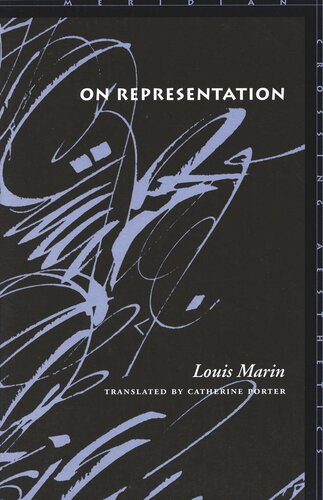

Most ebook files are in PDF format, so you can easily read them using various software such as Foxit Reader or directly on the Google Chrome browser.
Some ebook files are released by publishers in other formats such as .awz, .mobi, .epub, .fb2, etc. You may need to install specific software to read these formats on mobile/PC, such as Calibre.
Please read the tutorial at this link: https://ebookbell.com/faq
We offer FREE conversion to the popular formats you request; however, this may take some time. Therefore, right after payment, please email us, and we will try to provide the service as quickly as possible.
For some exceptional file formats or broken links (if any), please refrain from opening any disputes. Instead, email us first, and we will try to assist within a maximum of 6 hours.
EbookBell Team

0.0
0 reviewsAt his death in 1992, the eminent philosopher, critic, and theorist Louis Marin left, in addition to a dozen influential books (including Sublime Poussin, Stanford, 1999), a corpus of some three hundred articles and essays published in journals and anthologies. A collection of twenty-two essays that appeared between 1971 and 1992, this book interrogates the theory and practice of representation as it is carried out by both linguistic and graphic signs, and thus the complex relation between language and image, between perception and conception. The essays are grouped in four parts that reflect the continuity and coherence of Marin's interests in semiology, narrative, visuality, and painting. The interdisciplinary horizon of the book draws on multiple scholarly resources—the cultural history of the seventeenth century, the philosophy of language, the tools of discourse analysis, the history of art and aesthetics, the analysis of reception—to address a stunning diversity of subjects ranging from historical painting through cartography to the processes of deciphering texts, interpreting stories, and reading images. Throughout the essays, Marin's reflection on representation is supported and deepened by his brilliant exegesis of graphic art. His analysis of works by Caravaggio, Philippe de Champaigne, Le Brun, and Poussin, among others, provides the armature that allows him to describe both the structural logic of representation and the intricate processes of production and reception that make it dynamic and unstable. Marin demonstrates with consummate rigor why the pursuit of a general theory of representation is experienced by artists and critics alike as an inevitable, yet unattainable objective.